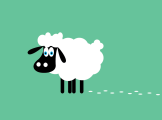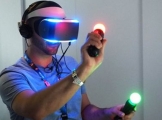|
我知道这个问题得到了很多回答,但我的情况似乎有所不同。我正在尝试编写一个顶级函数,我可以在其中随时截取我的应用程序的屏幕截图,无论是 openGLES 还是 UIKit,我将无法访问底层类来进行任何更改。
我一直在尝试的代码适用于 UIKit,但对于 OpenGLES 部件返回黑屏
CGSize imageSize = [[UIScreen mainScreen] bounds].size;
if (NULL != UIGraphicsBeginImageContextWithOptions)
UIGraphicsBeginImageContextWithOptions(imageSize, NO, 0);
else
UIGraphicsBeginImageContext(imageSize);
CGContextRef context = UIGraphicsGetCurrentContext();
// Iterate over every window from back to front
for (UIWindow *window in [[UIApplication sharedApplication] windows])
{
if ( selector(screen)] || [window screen] == [UIScreen mainScreen])
{
// -renderInContext: renders in the coordinate space of the layer,
// so we must first apply the layer's geometry to the graphics context
CGContextSaveGState(context);
// Center the context around the window's anchor point
CGContextTranslateCTM(context, [window center].x, [window center].y);
// Apply the window's transform about the anchor point
CGContextConcatCTM(context, [window transform]);
// Offset by the portion of the bounds left of and above the anchor point
CGContextTranslateCTM(context,
-[window bounds].size.width * [[window layer] anchorPoint].x,
-[window bounds].size.height * [[window layer] anchorPoint].y);
for (UIView *subview in window.subviews)
{
CAEAGLLayer *eaglLayer = (CAEAGLLayer *) subview.layer;
if([eaglLayer respondsToSelector selector(screen)] || [window screen] == [UIScreen mainScreen])
{
// -renderInContext: renders in the coordinate space of the layer,
// so we must first apply the layer's geometry to the graphics context
CGContextSaveGState(context);
// Center the context around the window's anchor point
CGContextTranslateCTM(context, [window center].x, [window center].y);
// Apply the window's transform about the anchor point
CGContextConcatCTM(context, [window transform]);
// Offset by the portion of the bounds left of and above the anchor point
CGContextTranslateCTM(context,
-[window bounds].size.width * [[window layer] anchorPoint].x,
-[window bounds].size.height * [[window layer] anchorPoint].y);
for (UIView *subview in window.subviews)
{
CAEAGLLayer *eaglLayer = (CAEAGLLayer *) subview.layer;
if([eaglLayer respondsToSelector selector(drawableProperties)]) {
NSLog(@"reponds");
/*eaglLayer.drawableProperties = @{
kEAGLDrawablePropertyRetainedBacking: [NSNumber numberWithBool:YES],
kEAGLDrawablePropertyColorFormat: kEAGLColorFormatRGBA8
};*/
UIImageView *glImageView = [[UIImageView alloc] initWithImage:[self snapshotx:subview]];
glImageView.transform = CGAffineTransformMakeScale(1, -1);
[glImageView.layer renderInContext:context];
//CGImageRef iref = [self snapshot:subview withContext:context];
//CGContextDrawImage(context, CGRectMake(0.0, 0.0, 640, 960), iref);
}
[[window layer] renderInContext:context];
// Restore the context
CGContextRestoreGState(context);
}
}
}
// Retrieve the screenshot image
UIImage *image = UIGraphicsGetImageFromCurrentImageContext();
UIGraphicsEndImageContext();
return image; selector(drawableProperties)]) {
NSLog(@"reponds");
/*eaglLayer.drawableProperties = @{
kEAGLDrawablePropertyRetainedBacking: [NSNumber numberWithBool:YES],
kEAGLDrawablePropertyColorFormat: kEAGLColorFormatRGBA8
};*/
UIImageView *glImageView = [[UIImageView alloc] initWithImage:[self snapshotx:subview]];
glImageView.transform = CGAffineTransformMakeScale(1, -1);
[glImageView.layer renderInContext:context];
//CGImageRef iref = [self snapshot:subview withContext:context];
//CGContextDrawImage(context, CGRectMake(0.0, 0.0, 640, 960), iref);
}
[[window layer] renderInContext:context];
// Restore the context
CGContextRestoreGState(context);
}
}
}
// Retrieve the screenshot image
UIImage *image = UIGraphicsGetImageFromCurrentImageContext();
UIGraphicsEndImageContext();
return image;
和
- (UIImage*)snapshotx UIView*)eaglview
{
GLint backingWidth, backingHeight;
//glBindRenderbufferOES(GL_RENDERBUFFER_OES, _colorRenderbuffer);
//don't know how to access the renderbuffer if i can't directly access the below code
// Get the size of the backing CAEAGLLayer
glGetRenderbufferParameterivOES(GL_RENDERBUFFER_OES, GL_RENDERBUFFER_WIDTH_OES, &backingWidth);
glGetRenderbufferParameterivOES(GL_RENDERBUFFER_OES, GL_RENDERBUFFER_HEIGHT_OES, &backingHeight);
NSInteger x = 0, y = 0, width = backingWidth, height = backingHeight;
NSInteger dataLength = width * height * 4;
GLubyte *data = (GLubyte*)malloc(dataLength * sizeof(GLubyte));
// Read pixel data from the framebuffer
glPixelStorei(GL_PACK_ALIGNMENT, 4);
glReadPixels(x, y, width, height, GL_RGBA, GL_UNSIGNED_BYTE, data);
// Create a CGImage with the pixel data
// If your OpenGL ES content is opaque, use kCGImageAlphaNoneSkipLast to ignore the alpha channel
// otherwise, use kCGImageAlphaPremultipliedLast
CGDataProviderRef ref = CGDataProviderCreateWithData(NULL, data, dataLength, NULL);
CGColorSpaceRef colorspace = CGColorSpaceCreateDeviceRGB();
CGImageRef iref = CGImageCreate (
width,
height,
8,
32,
width * 4,
colorspace,
// Fix from Apple implementation
// (was: kCGBitmapByteOrder32Big | kCGImageAlphaPremultipliedLast).
kCGBitmapByteOrderDefault,
ref,
NULL,
true,
kCGRenderingIntentDefault
);
// OpenGL ES measures data in PIXELS
// Create a graphics context with the target size measured in POINTS
NSInteger widthInPoints, heightInPoints;
if (NULL != UIGraphicsBeginImageContextWithOptions)
{
// On iOS 4 and later, use UIGraphicsBeginImageContextWithOptions to take the scale into consideration
// Set the scale parameter to your OpenGL ES view's contentScaleFactor
// so that you get a high-resolution snapshot when its value is greater than 1.0
CGFloat scale = eaglview.contentScaleFactor;
widthInPoints = width / scale;
heightInPoints = height / scale;
UIGraphicsBeginImageContextWithOptions(CGSizeMake(widthInPoints, heightInPoints), NO, scale);
}
else {
// On iOS prior to 4, fall back to use UIGraphicsBeginImageContext
widthInPoints = width;
heightInPoints = height;
UIGraphicsBeginImageContext(CGSizeMake(widthInPoints, heightInPoints));
}
CGContextRef cgcontext = UIGraphicsGetCurrentContext();
// UIKit coordinate system is upside down to GL/Quartz coordinate system
// Flip the CGImage by rendering it to the flipped bitmap context
// The size of the destination area is measured in POINTS
CGContextSetBlendMode(cgcontext, kCGBlendModeCopy);
CGContextDrawImage(cgcontext, CGRectMake(0.0, 0.0, widthInPoints, heightInPoints), iref);
// Retrieve the UIImage from the current context
UIImage *image = UIGraphicsGetImageFromCurrentImageContext();
UIGraphicsEndImageContext();
// Clean up
free(data);
CFRelease(ref);
CFRelease(colorspace);
CGImageRelease(iref);
return image;
} UIView*)eaglview
{
GLint backingWidth, backingHeight;
//glBindRenderbufferOES(GL_RENDERBUFFER_OES, _colorRenderbuffer);
//don't know how to access the renderbuffer if i can't directly access the below code
// Get the size of the backing CAEAGLLayer
glGetRenderbufferParameterivOES(GL_RENDERBUFFER_OES, GL_RENDERBUFFER_WIDTH_OES, &backingWidth);
glGetRenderbufferParameterivOES(GL_RENDERBUFFER_OES, GL_RENDERBUFFER_HEIGHT_OES, &backingHeight);
NSInteger x = 0, y = 0, width = backingWidth, height = backingHeight;
NSInteger dataLength = width * height * 4;
GLubyte *data = (GLubyte*)malloc(dataLength * sizeof(GLubyte));
// Read pixel data from the framebuffer
glPixelStorei(GL_PACK_ALIGNMENT, 4);
glReadPixels(x, y, width, height, GL_RGBA, GL_UNSIGNED_BYTE, data);
// Create a CGImage with the pixel data
// If your OpenGL ES content is opaque, use kCGImageAlphaNoneSkipLast to ignore the alpha channel
// otherwise, use kCGImageAlphaPremultipliedLast
CGDataProviderRef ref = CGDataProviderCreateWithData(NULL, data, dataLength, NULL);
CGColorSpaceRef colorspace = CGColorSpaceCreateDeviceRGB();
CGImageRef iref = CGImageCreate (
width,
height,
8,
32,
width * 4,
colorspace,
// Fix from Apple implementation
// (was: kCGBitmapByteOrder32Big | kCGImageAlphaPremultipliedLast).
kCGBitmapByteOrderDefault,
ref,
NULL,
true,
kCGRenderingIntentDefault
);
// OpenGL ES measures data in PIXELS
// Create a graphics context with the target size measured in POINTS
NSInteger widthInPoints, heightInPoints;
if (NULL != UIGraphicsBeginImageContextWithOptions)
{
// On iOS 4 and later, use UIGraphicsBeginImageContextWithOptions to take the scale into consideration
// Set the scale parameter to your OpenGL ES view's contentScaleFactor
// so that you get a high-resolution snapshot when its value is greater than 1.0
CGFloat scale = eaglview.contentScaleFactor;
widthInPoints = width / scale;
heightInPoints = height / scale;
UIGraphicsBeginImageContextWithOptions(CGSizeMake(widthInPoints, heightInPoints), NO, scale);
}
else {
// On iOS prior to 4, fall back to use UIGraphicsBeginImageContext
widthInPoints = width;
heightInPoints = height;
UIGraphicsBeginImageContext(CGSizeMake(widthInPoints, heightInPoints));
}
CGContextRef cgcontext = UIGraphicsGetCurrentContext();
// UIKit coordinate system is upside down to GL/Quartz coordinate system
// Flip the CGImage by rendering it to the flipped bitmap context
// The size of the destination area is measured in POINTS
CGContextSetBlendMode(cgcontext, kCGBlendModeCopy);
CGContextDrawImage(cgcontext, CGRectMake(0.0, 0.0, widthInPoints, heightInPoints), iref);
// Retrieve the UIImage from the current context
UIImage *image = UIGraphicsGetImageFromCurrentImageContext();
UIGraphicsEndImageContext();
// Clean up
free(data);
CFRelease(ref);
CFRelease(colorspace);
CGImageRelease(iref);
return image;
}
关于如何在不修改应用程序其余部分中的类的情况下混合两者有什么建议?
谢谢!
Best Answer-推荐答案
我看到你在那里尝试做的事情,这并不是一个糟糕的概念。不过似乎确实存在一个大问题:您不能随时调用 glReadPixels。首先,您应该确保缓冲区中充满了您真正需要的数据(像素),其次是应该在其 GL 部分正在处理的同一线程上调用它...
如果 GL View 不是您的,您在调用该屏幕截图方法时可能会遇到一些大麻烦,您需要调用一些方法来触发绑定(bind)其内部上下文,如果它是动画,您必须知道循环何时完成确保您收到的像素与 View 上显示的像素相同。
无论如何,如果您通过了所有这些,您可能仍然需要“跳过”不同的线程或需要等待一个循环完成。在这种情况下,我建议您使用返回屏幕截图图像的 block ,该图像应该作为方法参数传递,这样您就可以在返回时捕获它。话虽如此,如果您可以覆盖 GL View 上的某些方法,以便能够通过回调 block 返回屏幕截图图像并编写一些递归系统,那将是最好的。
总而言之,您需要预测多线程,设置上下文,绑定(bind)正确的帧缓冲区,等待所有内容被渲染。这一切都可能导致无法创建一个屏幕截图方法,该方法可以简单地适用于任何应用程序、 View 、系统,而不会重载某些内部方法。
请注意,您根本不允许在您的应用程序中制作完整的屏幕截图(例如同时按下主页和锁定按钮)。至于 UIView 部分如此容易从中创建图像是因为 UIView 被重绘到独立于屏幕的图形上下文中;好像您可以使用一些 GL 管道并将其绑定(bind)到您自己的缓冲区和上下文并绘制它,这将导致能够独立获取其屏幕截图并且可以在任何线程上执行。
关于ios - 从父类获取混合 OpenGLES 和 UIKIT 的 iOS 屏幕截图,我们在Stack Overflow上找到一个类似的问题:
https://stackoverflow.com/questions/17013970/
|  客服电话
客服电话
 APP下载
APP下载

 官方微信
官方微信
















 selector(screen)] || [window screen] == [UIScreen mainScreen])
{
// -renderInContext: renders in the coordinate space of the layer,
// so we must first apply the layer's geometry to the graphics context
CGContextSaveGState(context);
// Center the context around the window's anchor point
CGContextTranslateCTM(context, [window center].x, [window center].y);
// Apply the window's transform about the anchor point
CGContextConcatCTM(context, [window transform]);
// Offset by the portion of the bounds left of and above the anchor point
CGContextTranslateCTM(context,
-[window bounds].size.width * [[window layer] anchorPoint].x,
-[window bounds].size.height * [[window layer] anchorPoint].y);
for (UIView *subview in window.subviews)
{
CAEAGLLayer *eaglLayer = (CAEAGLLayer *) subview.layer;
if([eaglLayer respondsToSelector
selector(screen)] || [window screen] == [UIScreen mainScreen])
{
// -renderInContext: renders in the coordinate space of the layer,
// so we must first apply the layer's geometry to the graphics context
CGContextSaveGState(context);
// Center the context around the window's anchor point
CGContextTranslateCTM(context, [window center].x, [window center].y);
// Apply the window's transform about the anchor point
CGContextConcatCTM(context, [window transform]);
// Offset by the portion of the bounds left of and above the anchor point
CGContextTranslateCTM(context,
-[window bounds].size.width * [[window layer] anchorPoint].x,
-[window bounds].size.height * [[window layer] anchorPoint].y);
for (UIView *subview in window.subviews)
{
CAEAGLLayer *eaglLayer = (CAEAGLLayer *) subview.layer;
if([eaglLayer respondsToSelector UIView*)eaglview
{
GLint backingWidth, backingHeight;
//glBindRenderbufferOES(GL_RENDERBUFFER_OES, _colorRenderbuffer);
//don't know how to access the renderbuffer if i can't directly access the below code
// Get the size of the backing CAEAGLLayer
glGetRenderbufferParameterivOES(GL_RENDERBUFFER_OES, GL_RENDERBUFFER_WIDTH_OES, &backingWidth);
glGetRenderbufferParameterivOES(GL_RENDERBUFFER_OES, GL_RENDERBUFFER_HEIGHT_OES, &backingHeight);
NSInteger x = 0, y = 0, width = backingWidth, height = backingHeight;
NSInteger dataLength = width * height * 4;
GLubyte *data = (GLubyte*)malloc(dataLength * sizeof(GLubyte));
// Read pixel data from the framebuffer
glPixelStorei(GL_PACK_ALIGNMENT, 4);
glReadPixels(x, y, width, height, GL_RGBA, GL_UNSIGNED_BYTE, data);
// Create a CGImage with the pixel data
// If your OpenGL ES content is opaque, use kCGImageAlphaNoneSkipLast to ignore the alpha channel
// otherwise, use kCGImageAlphaPremultipliedLast
CGDataProviderRef ref = CGDataProviderCreateWithData(NULL, data, dataLength, NULL);
CGColorSpaceRef colorspace = CGColorSpaceCreateDeviceRGB();
CGImageRef iref = CGImageCreate (
width,
height,
8,
32,
width * 4,
colorspace,
// Fix from Apple implementation
// (was: kCGBitmapByteOrder32Big | kCGImageAlphaPremultipliedLast).
kCGBitmapByteOrderDefault,
ref,
NULL,
true,
kCGRenderingIntentDefault
);
// OpenGL ES measures data in PIXELS
// Create a graphics context with the target size measured in POINTS
NSInteger widthInPoints, heightInPoints;
if (NULL != UIGraphicsBeginImageContextWithOptions)
{
// On iOS 4 and later, use UIGraphicsBeginImageContextWithOptions to take the scale into consideration
// Set the scale parameter to your OpenGL ES view's contentScaleFactor
// so that you get a high-resolution snapshot when its value is greater than 1.0
CGFloat scale = eaglview.contentScaleFactor;
widthInPoints = width / scale;
heightInPoints = height / scale;
UIGraphicsBeginImageContextWithOptions(CGSizeMake(widthInPoints, heightInPoints), NO, scale);
}
else {
// On iOS prior to 4, fall back to use UIGraphicsBeginImageContext
widthInPoints = width;
heightInPoints = height;
UIGraphicsBeginImageContext(CGSizeMake(widthInPoints, heightInPoints));
}
CGContextRef cgcontext = UIGraphicsGetCurrentContext();
// UIKit coordinate system is upside down to GL/Quartz coordinate system
// Flip the CGImage by rendering it to the flipped bitmap context
// The size of the destination area is measured in POINTS
CGContextSetBlendMode(cgcontext, kCGBlendModeCopy);
CGContextDrawImage(cgcontext, CGRectMake(0.0, 0.0, widthInPoints, heightInPoints), iref);
// Retrieve the UIImage from the current context
UIImage *image = UIGraphicsGetImageFromCurrentImageContext();
UIGraphicsEndImageContext();
// Clean up
free(data);
CFRelease(ref);
CFRelease(colorspace);
CGImageRelease(iref);
return image;
}
UIView*)eaglview
{
GLint backingWidth, backingHeight;
//glBindRenderbufferOES(GL_RENDERBUFFER_OES, _colorRenderbuffer);
//don't know how to access the renderbuffer if i can't directly access the below code
// Get the size of the backing CAEAGLLayer
glGetRenderbufferParameterivOES(GL_RENDERBUFFER_OES, GL_RENDERBUFFER_WIDTH_OES, &backingWidth);
glGetRenderbufferParameterivOES(GL_RENDERBUFFER_OES, GL_RENDERBUFFER_HEIGHT_OES, &backingHeight);
NSInteger x = 0, y = 0, width = backingWidth, height = backingHeight;
NSInteger dataLength = width * height * 4;
GLubyte *data = (GLubyte*)malloc(dataLength * sizeof(GLubyte));
// Read pixel data from the framebuffer
glPixelStorei(GL_PACK_ALIGNMENT, 4);
glReadPixels(x, y, width, height, GL_RGBA, GL_UNSIGNED_BYTE, data);
// Create a CGImage with the pixel data
// If your OpenGL ES content is opaque, use kCGImageAlphaNoneSkipLast to ignore the alpha channel
// otherwise, use kCGImageAlphaPremultipliedLast
CGDataProviderRef ref = CGDataProviderCreateWithData(NULL, data, dataLength, NULL);
CGColorSpaceRef colorspace = CGColorSpaceCreateDeviceRGB();
CGImageRef iref = CGImageCreate (
width,
height,
8,
32,
width * 4,
colorspace,
// Fix from Apple implementation
// (was: kCGBitmapByteOrder32Big | kCGImageAlphaPremultipliedLast).
kCGBitmapByteOrderDefault,
ref,
NULL,
true,
kCGRenderingIntentDefault
);
// OpenGL ES measures data in PIXELS
// Create a graphics context with the target size measured in POINTS
NSInteger widthInPoints, heightInPoints;
if (NULL != UIGraphicsBeginImageContextWithOptions)
{
// On iOS 4 and later, use UIGraphicsBeginImageContextWithOptions to take the scale into consideration
// Set the scale parameter to your OpenGL ES view's contentScaleFactor
// so that you get a high-resolution snapshot when its value is greater than 1.0
CGFloat scale = eaglview.contentScaleFactor;
widthInPoints = width / scale;
heightInPoints = height / scale;
UIGraphicsBeginImageContextWithOptions(CGSizeMake(widthInPoints, heightInPoints), NO, scale);
}
else {
// On iOS prior to 4, fall back to use UIGraphicsBeginImageContext
widthInPoints = width;
heightInPoints = height;
UIGraphicsBeginImageContext(CGSizeMake(widthInPoints, heightInPoints));
}
CGContextRef cgcontext = UIGraphicsGetCurrentContext();
// UIKit coordinate system is upside down to GL/Quartz coordinate system
// Flip the CGImage by rendering it to the flipped bitmap context
// The size of the destination area is measured in POINTS
CGContextSetBlendMode(cgcontext, kCGBlendModeCopy);
CGContextDrawImage(cgcontext, CGRectMake(0.0, 0.0, widthInPoints, heightInPoints), iref);
// Retrieve the UIImage from the current context
UIImage *image = UIGraphicsGetImageFromCurrentImageContext();
UIGraphicsEndImageContext();
// Clean up
free(data);
CFRelease(ref);
CFRelease(colorspace);
CGImageRelease(iref);
return image;
}

